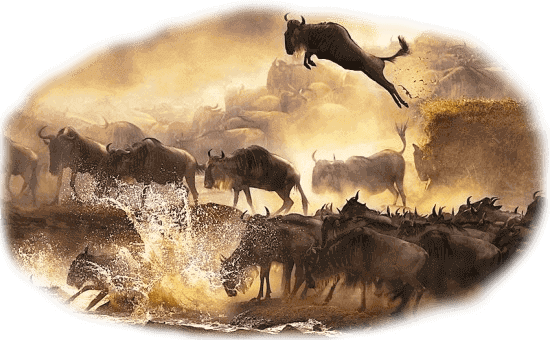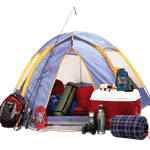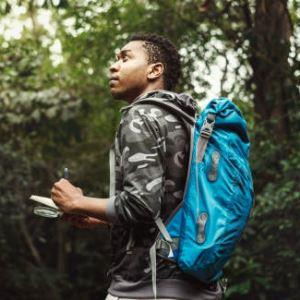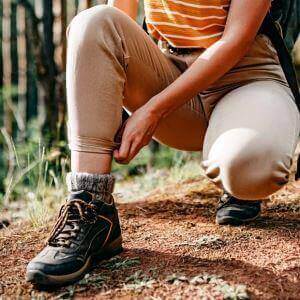 Kenya is a rewarding destination for Indian travelers seeking adventure, culture, and diverse landscapes. The best time to visit largely depends on what you want to experience. Kenya has a varied climate that caters to both wildlife lovers and cultural explorers. Indian tourists, especially those escaping extreme summer heat or monsoon rains, find Kenya’s dry season particularly inviting. The dry season from July to October offers some of the most spectacular wildlife experiences, including the iconic Great Migration in the Masai Mara. This period is ideal for safaris, as animals gather around water sources and vegetation is sparse, making sightings easier. Parks like Amboseli, Samburu, and Lake Nakuru also shine during this time. Clear skies, cool evenings, and minimal rainfall make this season the top choice for Indian families and honeymooners alike. From January to March, Kenya experiences another dry spell. This is a great time for photography, with bright skies and beautiful backdrops. Mount Kilimanjaro is clearly visible from Amboseli, and the coastlines in Mombasa and Diani are perfect for beach holidays. For Indian travelers who prefer fewer crowds and more relaxed exploration, this season is particularly enjoyable. However, even the wetter months from March to May and in November have their advantages. The landscapes are lush and green, ideal for photographers and those interested in birdwatching. Accommodations tend to be more affordable, and fewer tourists mean more intimate experiences. Just be mindful of muddy roads and less predictable weather. eyond wildlife, Kenya’s festivals and cultural events add depth to any itinerary. The Lamu Cultural Festival in November is a highlight, showcasing traditional Swahili heritage. The Lake Turkana Festival in May or June brings together multiple ethnic groups in a vibrant celebration of Kenyan diversity. Motorsport enthusiasts may enjoy the world-renowned Safari Rally held mid-year. In short, the ideal time to visit Kenya from India depends on your priorities. For wildlife and safaris, July to October and January to March are best. For culture, consider planning around local festivals. Whatever your interests, Kenya offers a blend of adventure and relaxation that resonates with Indian travelers. With direct flights from Indian cities and warm hospitality awaiting, Kenya is not just a destination it’s a journey into the wild and the wonderful.
Kenya is a rewarding destination for Indian travelers seeking adventure, culture, and diverse landscapes. The best time to visit largely depends on what you want to experience. Kenya has a varied climate that caters to both wildlife lovers and cultural explorers. Indian tourists, especially those escaping extreme summer heat or monsoon rains, find Kenya’s dry season particularly inviting. The dry season from July to October offers some of the most spectacular wildlife experiences, including the iconic Great Migration in the Masai Mara. This period is ideal for safaris, as animals gather around water sources and vegetation is sparse, making sightings easier. Parks like Amboseli, Samburu, and Lake Nakuru also shine during this time. Clear skies, cool evenings, and minimal rainfall make this season the top choice for Indian families and honeymooners alike. From January to March, Kenya experiences another dry spell. This is a great time for photography, with bright skies and beautiful backdrops. Mount Kilimanjaro is clearly visible from Amboseli, and the coastlines in Mombasa and Diani are perfect for beach holidays. For Indian travelers who prefer fewer crowds and more relaxed exploration, this season is particularly enjoyable. However, even the wetter months from March to May and in November have their advantages. The landscapes are lush and green, ideal for photographers and those interested in birdwatching. Accommodations tend to be more affordable, and fewer tourists mean more intimate experiences. Just be mindful of muddy roads and less predictable weather. eyond wildlife, Kenya’s festivals and cultural events add depth to any itinerary. The Lamu Cultural Festival in November is a highlight, showcasing traditional Swahili heritage. The Lake Turkana Festival in May or June brings together multiple ethnic groups in a vibrant celebration of Kenyan diversity. Motorsport enthusiasts may enjoy the world-renowned Safari Rally held mid-year. In short, the ideal time to visit Kenya from India depends on your priorities. For wildlife and safaris, July to October and January to March are best. For culture, consider planning around local festivals. Whatever your interests, Kenya offers a blend of adventure and relaxation that resonates with Indian travelers. With direct flights from Indian cities and warm hospitality awaiting, Kenya is not just a destination it’s a journey into the wild and the wonderful.
Sample Weather and Wildlife Viewing Chart
| Month | Weather Conditions | Wildlife Viewing Quality | Key Events/Festivals |
|---|---|---|---|
| January | Warm & dry | Excellent | Nairobi Restaurant Week |
| March | Beginning of long rains | Moderate | Minimal |
| June | Cool & dry | High | Safari Rally |
| July | Cool & dry | Peak | Start of the Great Migration |
| August | Cool & dry | Peak | Maralal Camel Derby |
| October | Short rains begin | Moderate to Good | Late Migration sightings |
| November | Warm, short rains | Good | Lamu Cultural Festival, Mombasa Carnival |
| December | Dry season resumes | Excellent | Holiday specials in national parks/beaches |
Ideal Months for Indian Travelers to Explore Kenya
Kenya is a land of contrasts wild savannahs, sun-drenched coastlines, and rich cultural heritage. For Indian travelers, timing your visit can greatly enhance the experience. Whether you're drawn by the spectacle of the Great Migration, the appeal of serene beaches, or the charm of cultural festivals, understanding the seasonal rhythms of Kenya ensures a rewarding journey. With comfortable weather and diverse activities year-round, Kenya invites Indian tourists to explore on their own terms.
- January to March: These are warm, dry months ideal for Indian tourists who prefer a more temperate climate without much rainfall. National parks like Masai Mara and Amboseli are excellent for wildlife viewing as animals gather around waterholes. Visibility is high, roads are accessible, and malaria risk is relatively lower.
- July to October: This period marks the peak Kenya safari season for Indian tourists. The famous Great Migration reaches Masai Mara from Tanzania, offering dramatic river crossings and predator-prey interactions. It’s dry, cool, and less humid ideal for photography and extended game drives.
- December holidays: Indians traveling during the festive season find December highly appealing. The climate is warm, safari lodges host holiday-themed events, and it’s a great time to combine wildlife with beach holidays in Mombasa or Diani.
Kenya Safari Season Guide for Indian Tourists; What You Need to Know
Kenya offers an extraordinary safari experience, and understanding its seasonal patterns can help Indian travelers plan their perfect wildlife adventure. The country’s climate is defined by two dry seasons and two rainy seasons, each influencing the movement of animals and the overall safari experience. For most Indian tourists, the dry seasons from January to March and July to October are ideal for planning safaris. During the January to March period, Kenya experiences warm, dry weather, especially in parks such as Masai Mara, Amboseli, and Tsavo. Wildlife is abundant and easy to spot near water sources, and photography conditions are excellent with clear skies and open landscapes. This time aligns well with India's cooler months, making it a pleasant seasonal escape. From July to October, the long dry season brings the pinnacle of safari viewing: the Great Migration. Indian travelers can witness millions of wildebeests and zebras crossing from Tanzania’s Serengeti into Kenya’s Masai Mara. The spectacle of river crossings, predator chases, and massive herds on the plains draws nature enthusiasts and photographers from across the globe. These months also coincide with school holidays in India, making them ideal for family safaris. The long rains from March to May and the short rains around November bring lush greenery to the parks. While the landscapes are stunning and birdlife is prolific, some lodges close due to accessibility challenges. However, for Indian travelers interested in fewer crowds, lower rates, and unique photographic opportunities, these off-peak months can be rewarding. Different parks in Kenya offer varied safari experiences throughout the year. Samburu, located in the north, is more arid and often accessible even during rainy months. Amboseli offers dramatic views of Mount Kilimanjaro and is especially impressive during the dry seasons when elephants roam freely across the plains. Lake Nakuru, known for its flamingos and rhino sightings, remains consistent year-round. Indian tourists are also encouraged to consider combining safaris with cultural or coastal extensions. After thrilling game drives in the bush, a few days in Diani Beach or Mombasa can provide relaxation and a taste of Kenya’s coastal culture. With a variety of accommodations from luxury tented camps to family-friendly lodges Kenya caters to every traveler's preference. The best safari season depends on your goals whether it's spotting the Big Five, witnessing the Great Migration, or simply enjoying nature in serenity. Kenya’s safari seasons are designed by nature, but tailored experiences from providers like Homejoy Safari Adventures make every visit unforgettable.
Top Kenyan Festivals to Experience as an Indian Tourist
Kenya is not only known for its iconic wildlife and landscapes but also for its vibrant cultural festivals that bring together traditions, music, and communities. For Indian tourists looking to add depth and diversity to their travels, attending local festivals can provide meaningful connections and a richer understanding of Kenyan life. From coastal celebrations to tribal gatherings and international sports events, Kenya’s festivals offer immersive experiences that go far beyond typical sightseeing.
- Lamu Cultural Festival (November): Held in the ancient Swahili town of Lamu, this festival is a vibrant showcase of coastal traditions. Indian visitors can witness dhow sailing races on the Indian Ocean, traditional Swahili poetry performances, donkey races, and captivating Taarab music concerts. The architecture, food, and heritage of Lamu feel both distant and familiar, with Indian Ocean trade routes historically connecting Indian and Swahili cultures.
- Lake Turkana Festival (May/June): Taking place in one of the most remote and visually striking parts of northern Kenya, this festival is a gathering of over 14 ethnic communities, including the Rendille, Samburu, El Molo, and Turkana. Indian tourists with an interest in anthropology and traditional cultures will find this an exceptional experience. The event features traditional dances, storytelling, attire, and indigenous cuisine, offering a rare, firsthand look at some of Kenya’s least-visited yet culturally rich regions.
- Safari Rally (June-July): As part of the World Rally Championship, the Safari Rally combines thrilling motorsport with the untamed backdrop of Kenya’s wilderness. Indian travelers with a passion for high-speed adventure and competitive sports can enjoy watching world-class drivers tackle rugged tracks through national parks and rural areas. The rally also showcases Kenya’s capacity to blend sport, nature, and local hospitality into a uniquely Kenyan celebration of endurance and resilience.
Visit During the Best Weather in Kenya for Indian Holidaymakers; Magical Experiences
 Weather can make or break a holiday, and Indian tourists heading to Kenya often look for the most comfortable time to travel, balancing cool temperatures, minimal rainfall, and peak wildlife activity. Fortunately, Kenya’s climate caters well to Indian preferences, offering two main dry seasons that create ideal travel windows. From January to March, Kenya experiences a short dry season marked by warm but manageable temperatures, clear skies, and minimal humidity. For Indian travelers used to foggy winters or sticky monsoons, this season provides an appealing contrast. Destinations like Nairobi and the Central Highlands are pleasantly mild, while coastal areas such as Mombasa and Diani offer excellent beach conditions. Wildlife viewing is exceptional in parks like Amboseli and Tsavo, where animals gather around remaining water sources, and the unobstructed views of Mount Kilimanjaro are especially stunning. The longer dry season, from July to October, is perhaps the most favored among Indian tourists. These months are cool and dry, especially appealing to travelers escaping the heat of Indian summers. This season aligns perfectly with school holidays in India, making it ideal for family trips. Game parks such as the Masai Mara, Lake Nakuru, and Samburu are at their peak, with the Great Migration crossing into Kenya during this period. It’s also a fantastic time for game drives, as animals congregate in predictable areas, vegetation is sparse, and photo conditions are optimal. For Indian honeymooners and couples seeking romance, these dry months provide luxurious and comfortable conditions for safaris and beach combinations. Lodges are in full operation, offering a wide range of experiences from bush breakfasts to evening sundowners under the stars. Even though Kenya’s rainy seasons March to May (long rains) and November (short rains) might deter some travelers, they offer advantages for those seeking off-season value. The landscapes are green and lush, ideal for photography and birdwatching. Accommodations are more affordable, and crowds are minimal. Indian tourists who prefer quiet travel and unique experiences often find this a rewarding time. Overall, the best weather in Kenya for tourists can be found during the dry seasons, especially January to March and July to October. With clear skies, abundant wildlife, and comfortable temperatures, these periods offer magical experiences for families, couples, and solo travelers alike. Whether you're watching elephants beneath Kilimanjaro or relaxing on a white-sand beach, the Kenyan climate during these months creates unforgettable memories.
Weather can make or break a holiday, and Indian tourists heading to Kenya often look for the most comfortable time to travel, balancing cool temperatures, minimal rainfall, and peak wildlife activity. Fortunately, Kenya’s climate caters well to Indian preferences, offering two main dry seasons that create ideal travel windows. From January to March, Kenya experiences a short dry season marked by warm but manageable temperatures, clear skies, and minimal humidity. For Indian travelers used to foggy winters or sticky monsoons, this season provides an appealing contrast. Destinations like Nairobi and the Central Highlands are pleasantly mild, while coastal areas such as Mombasa and Diani offer excellent beach conditions. Wildlife viewing is exceptional in parks like Amboseli and Tsavo, where animals gather around remaining water sources, and the unobstructed views of Mount Kilimanjaro are especially stunning. The longer dry season, from July to October, is perhaps the most favored among Indian tourists. These months are cool and dry, especially appealing to travelers escaping the heat of Indian summers. This season aligns perfectly with school holidays in India, making it ideal for family trips. Game parks such as the Masai Mara, Lake Nakuru, and Samburu are at their peak, with the Great Migration crossing into Kenya during this period. It’s also a fantastic time for game drives, as animals congregate in predictable areas, vegetation is sparse, and photo conditions are optimal. For Indian honeymooners and couples seeking romance, these dry months provide luxurious and comfortable conditions for safaris and beach combinations. Lodges are in full operation, offering a wide range of experiences from bush breakfasts to evening sundowners under the stars. Even though Kenya’s rainy seasons March to May (long rains) and November (short rains) might deter some travelers, they offer advantages for those seeking off-season value. The landscapes are green and lush, ideal for photography and birdwatching. Accommodations are more affordable, and crowds are minimal. Indian tourists who prefer quiet travel and unique experiences often find this a rewarding time. Overall, the best weather in Kenya for tourists can be found during the dry seasons, especially January to March and July to October. With clear skies, abundant wildlife, and comfortable temperatures, these periods offer magical experiences for families, couples, and solo travelers alike. Whether you're watching elephants beneath Kilimanjaro or relaxing on a white-sand beach, the Kenyan climate during these months creates unforgettable memories.
When to Visit Kenya for the Great Migration from India
The Great Migration is one of the most dramatic wildlife spectacles on the planet, and for Indian travelers, witnessing it in Kenya is an unforgettable experience. Every year, over a million wildebeests, zebras, and gazelles journey across the Serengeti-Mara ecosystem in search of greener pastures. The migration, full of high drama and natural wonder, is best seen in the Masai Mara region of Kenya, and timing your visit right ensures a front-row seat to nature's greatest show.
- July to September: These are the best months for Indian travelers to witness the Great Migration in full swing. The vast herds arrive in Kenya’s Masai Mara from Tanzania, bringing with them thrilling predator-prey interactions. The iconic Mara River crossings happen during this time. Crocodiles lurk in the waters while lions and other predators wait on the banks, creating unforgettable scenes. For Indian families on summer break, this period is ideal for safaris with clear skies, cool temperatures, and optimal wildlife photography conditions.
- Late October: Although many animals begin their return to the Serengeti, plenty remain in the Masai Mara, and wildlife viewing is still excellent. This is a perfect time for Indian tourists looking to avoid peak-season crowds while still enjoying the migration. Lodge prices may be slightly lower, and the landscapes remain vibrant from short rains that begin toward the end of the month.
- Planning Tip: If you’re visiting for the migration, advance planning is crucial. Indian travelers are advised to book accommodations six to twelve months ahead of time, especially for July and August, when demand is highest. Charter flights, hot air balloon rides, and luxury safari lodges fill up quickly. We help Indian families, couples, and solo travelers design personalized safari itineraries, ensuring comfort and optimal game-viewing locations at the right time of year.
Cultural Events in Kenya Worth Traveling for from India
For Indian tourists seeking authentic cultural immersion, Kenya presents an exciting tapestry of traditions, music, rituals, and heritage across its regions. With more than 40 ethnic groups, each with its own language and customs, Kenya’s cultural calendar is rich and diverse. These events are more than spectacles they are living expressions of Kenya’s identity and offer Indian travelers a chance to connect with communities through shared experiences. Whether you're interested in music, dance, food, or unique social customs, cultural festivals in Kenya provide memorable moments beyond wildlife safaris.
- Maralal Camel Derby (August): Hosted in Samburu County, this unique festival is a thrilling blend of sport and tradition. Indian travelers are drawn to the spectacle of camel races across semi-arid landscapes, where local and international participants compete in a spirit of friendly rivalry. Beyond the race, there are traditional dances, cultural exhibits, and opportunities to interact with the pastoral Samburu people. It’s a rare glimpse into a lifestyle far removed from urban India.
- Mombasa Carnival (November): As Kenya’s largest multicultural street festival, the Mombasa Carnival showcases coastal heritage and celebrates ethnic harmony. Floats, dancers, acrobats, and musicians fill the streets with color and rhythm. Indian tourists appreciate the Swahili hospitality, lively parades, and coastal cuisine that blends African, Arab, and Asian influences echoing familiar cultural themes with a Kenyan twist.
- Nairobi Restaurant Week (January): Ideal for Indian food lovers and culinary adventurers, this event transforms the capital city into a food-lover’s haven. Dozens of top restaurants offer curated menus at discounted prices. While enjoying local and international dishes, Indian travelers can also discover Kenyan takes on vegetarian and spice-infused meals that mirror Indian tastes.
These cultural events make Kenya a dynamic destination that caters to more than just wildlife enthusiasts. Indian tourists often find resonance in Kenya’s communal spirit, colorful festivals, and rich storytelling traditions. Attending these events offers more than just entertainment it’s a way to understand the heart of Kenya and forge meaningful memories that last long after the trip ends.






